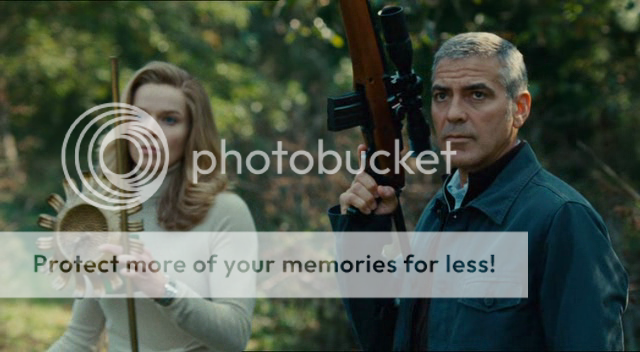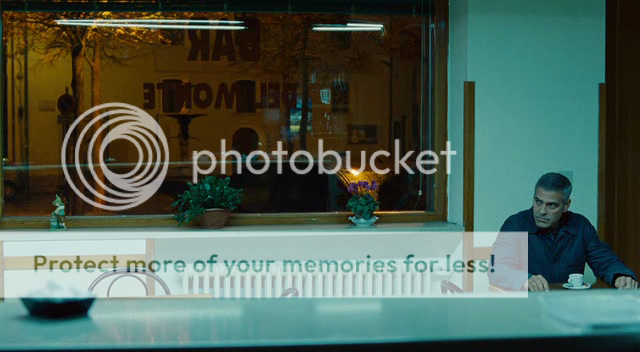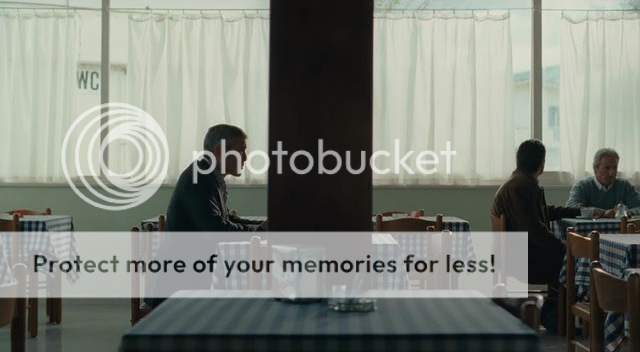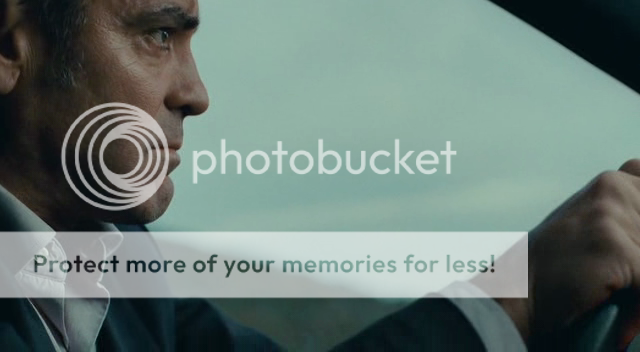It might seem unusual for director Anton Corbijn (Control, 2007) to direct a spy/assassin thriller, one that takes place almost entirely at the Castel Del Monte hillside commune. But one would be wrong in assuming that a) this is a spy or assassin film, and b) that this is a thriller. Well, it is and it isn’t. More on that in a bit.
The American is what I like to call a “state of mind” film. It’s a film genre name that I’d created (or maybe I didn't) in order to explain, simply, that what we [the audience] are subjected to is the state of mind and state of consciousness of a specific character, usually the protagonist. We follow the character around, everywhere that he or she walks, runs, or drives to, we see what they see, and we experience everything from their point of view. Also, we experience how they relate to the happenings that transpire around them and before them, be they good or bad happenings.
The quintessential “state of mind” film is Jean-Pierre Melville’s classic gangster drama Le Samourai (1967), which stars one of Frances greatest screen actors Alain Delon. In Le Samourai, Delon plays Jef Costello, a hitman. Dressed in impeccable taste and to the fashions of the decade, and always armed with a trench coat, fedora, and white pair of gloves, Costello spends most of his time lying or sitting still inside his Paris apartment, listening to his caged bird chirp and awaiting a purpose in life; a phone call with information regarding his next kill. Costello speaks very little throughout the film and Delon almost never carries an expression of any kind on his face, a performance that was made famously into a style by Buster Keaton.

The reason that I’d sidetracked into Melville’s territory is because The American borrows greatly from it in atmosphere and character treatment. George Clooney plays Jack, and sometimes Edward. During the film’s intro we see him living with a woman in a cabin, surrounded by snow and mountains; they are in Sweden. After an assassin attempts to kill Jack in the open, jacks one-ups him and then shoots the woman that’d accompanied him.

Who was she? And was she really an enemy or did Jack only think that and kill her out of paranoia? Those questions needn’t be asked because they set up the rest of the film, and paranoia is the key ingredient of the film.
We follow Jack as he travels to Italy and we stay with him almost entirely within the confines of the hillside commune. We follow him everywhere that he goes, we watch him eat, and we listen to his phone conversations with his employer who tells him that there’s another job lined up for him and that it doesn’t involve killing. For his new job Jack is to manufacture an untraceable rifle for a woman, and after meeting with her and getting the specifics for the job he begins to assemble the rifle from scratch. The task is showcased in sequences spread throughout the entire film and we see Jack assemble an entire rifle by hand, by feel, and to perfection. Watching those scenes makes one warm inside; they are wonderful to behold.



Whenever he feels the urge, Jack frequents a brothel and fornicates with only one prostitute, Clara (Violante Placido). What we are subject to is Jack’s inability to experience anything more than lust and all that we get is animalistic sex (not that there’s anything wrong with that). Clara is beautiful and yet her beauty alone is what transpires the lust in Jack. He can’t feel real emotions aside from fright and feeling suspense (or fright) is a state of mind, not feeling therefore Jack, basically, lacks the capacity to experience and/or showcase any and all emotions. What we have is the shell of a man, one that looks, sounds, and physically feels like we all do but can’t experience or express emotions and this film being shot in the “state of mind” approach is essential in inflicting Jack’s state of paranoid mind upon us. We feel his paranoia because he feels it; we see what he does and doesn’t see, and we feel the fear that he feels just by exiting his home.


I don’t believe that I have to mention how good of an actor George Clooney is, seeing that he can play an action hero (From Dusk Till Dawn), an intelligent, undercover CIA agent that’s being framed by his own employers (Syriana), and a goofball (‘O Brother, Where Art Thou? and Burn after Reading). In The American, Clooney delivers his best performance to date. He never breaks out of character and I sympathized with Jack throughout the film simply because of Clooney’s depiction of mounting paranoia.
Take a look at this series of shots from the film and take note of Jack’s growing paranoia and Clooney’s depiction of the madness:








If there’s one thing that I’d never seen in a hitman/assassin film is the assassin himself feeling scared. Jack is scared all the time even if he doesn’t show it. He is a professional at his calling and even though he lacks feeling as a whole he shows us that he’s human by fearing for his life. So why is he scared? Why wouldn’t he be scared? He doesn’t even know why he’s being targeted for assassination.
And now onto the visuals of the film: The American is, as mentioned by every viewer of the film, a gorgeous looking film but it’s very easy to shoot gorgeous looking films. Therefore, Corbijn chooses each and every single frame carefully and not a single shot in this film is pointless. Every shot crafts Jacks’ present state of mind and the people that frequent the shots come and go as they please, some simply disappear just in the corner of our eyes. Sometimes a man might be sitting in his car watching Jack and as Jack looks around to try and spot potential danger, upon looking back the man is no longer in the car. Which begs the question: was a man actually in the car all along or did Jack imagine him? Again, we are subjected to Jack’s present state of mind and so we see what he may or may not see. And these kinds of tricks happen throughout the film frequently. The fact that the film is slow in pace is essential in inflicting fear in the audience because we begin to feel for Jack. And even after the film is over, we know nothing about him at all, not even his real name, but the director had managed to make us care for a complete unknown without even providing personal detail about him.

There isn't any exposition in the film, plot or character oriented; just visual quirks that remind us where we are and why we’re there. Again, it’s very essential to make every single shot in the film mean something: the quiet Italian streets at night, the lack of dialogue that Jack outpours (or doesn’t), and lack of love between him and Clara until the third act, although I am convinced that it’s her beauty and his lust for her that propels him into an “I’ve fallen in love with her” situation. And the fact that she knows nothing about him, just like us, makes for a sad relationship that’s doomed from the start.
This is not a boring film nor is it a pointless film. Every single film in existence has a story to tell and a story behind it. This one tells a sad story very simply, but there is a story here and it’s a good one. If one watches any pointless film that is nothing more than schlock I can guarantee that there is a story to within it regardless; we simply need to find out from the director what the story is. Many directors do a good job of riding their films of plot and visually, or audibly punctuating the story with the talent for cinema storytelling; this is a visual medium after all.
Lastly, The American can be viewed as a silent film. I recommend to silent film era aficionados that this film be watched without any sound, except for subtitles, and they’ll quickly notice everything that they’d missed the first time around. It’s that good of a film that does a terrific job that took me only one viewing to notice how good it is simply by following the craftsmanship behind it. Don’t listen to what people say about this film, it being pointless, boring, and unintelligent. Judge it for yourself by understanding first and foremost what you’re about to watch, prepare yourself for a “state of mind” film, and enjoy the scenery.







